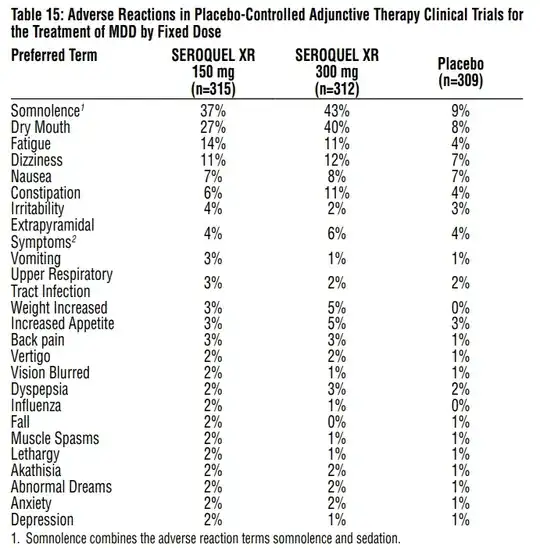Seroquel (quetiapine) is quite well known to cause perhaps the most sedation among all the drugs in the 'atypical antipsychotic' class of medication due to its strong histamine and alpha receptor antagonism.
In fact, although there is much controversy surrounding this, Seroquel is being prescribed more often as an 'off-label' treatment for insomnia due to the strong sedative effects of the drug. This is somewhat controversial due to the wide ranging effects of the drug and a possible alteration to REM sleep.
It certainly stands to reason that higher doses of a drug causes more side effects. This is generally termed 'dose-related' or 'dose-dependent' side effects.
Published information for quetiapine does reveal that somnolence is most likely dose-related, but it's not all that significant.
In a clinical trial for the drug for the treatment of schizophrenia in children aged 13-17, the prescribing information for Seroquel states:
Adverse events that were potentially dose-related with higher frequency in the 600 mg group compared to the 400 mg
group included somnolence (50% vs. 57%), nausea (6% vs. 10%) and tachycardia (6% vs. 9%).
Additionally, the prescribing information for Seroquel XR has the following chart:

So, it certainly does seem that higher doses of Seroquel do cause a higher incidence of somnolence, but it doesn't appear to be a huge difference between doses.
